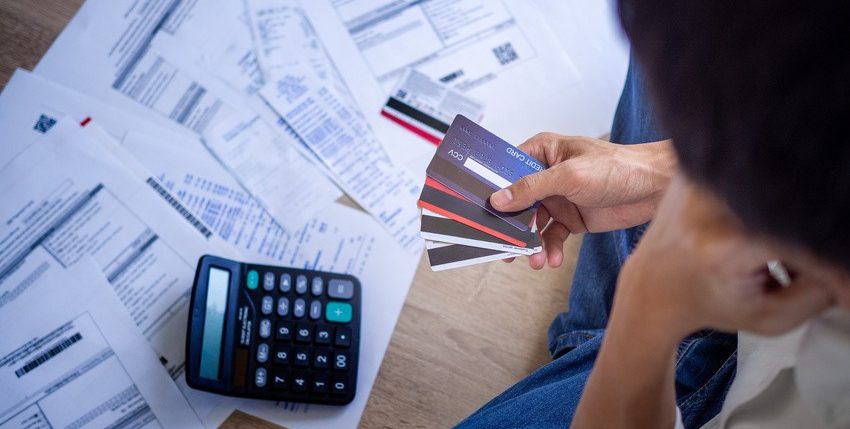
Could You Be Stuck In An Ongoing Cycle of Debt? Here’s How You Can Tell
With nearly 70% of Americans having less than $1,000 in savings, the cycle of debt is one that many people are all too familiar with. Once the cycle of debt begins, it can be challenging to climb out of it alone. Most people will need help to get out of the cycle of debt, and the first step is realizing what is happening and how to fix it. Below are six signs that someone is in an ongoing cycle of debt.
Maxing Out Credit Cards
Credit cards can be an excellent resource when they’re used appropriately. When they’re not, however, they can create a cycle of debt that’s difficult to escape. High interest rates mean that once the credit card is maxed out, it’s difficult for anyone to get it back under control. When a credit card becomes maxed out, many people can only make the minimum payments, contributing to the growth of their debt rapidly.
Only Making Minimum Payments
Once credit cards are maxed, many people only make the minimum payments because they can’t afford to pay off the entire balance at once. By making the minimum payments, interest continues accumulating, so the person ends up paying off significantly more by the time they get the credit card paid off. If the person uses any remaining balance after making a payment for the month, it will take even longer for the card to be paid off in full, leading to more money being spent on interest.
Can’t Qualify for Credit Cards
Another sign of the debt cycle is being unable to qualify for credit cards. While a person’s debt-to-income ratio isn’t part of their credit score, both the debt-to-income ratio and debt-to-credit ratio are looked at by lenders. If the ratio is too high, the person won’t be able to open a new credit card or get a large loan. A high ratio makes it impossible to purchase a new car with a loan or to get a mortgage for a home, along with making it harder to get a new credit card.
Living Paycheck to Paycheck
Many people today are living paycheck to paycheck. By the time it’s payday, they’re already out of funds and need the pay to survive. What happens if the check is delayed or if something happens and they can’t work? They end up further in debt, and it’s more challenging to climb out again. Living paycheck to paycheck, and sometimes not even making it that far, is a sign of the debt cycle that’s hard to end.
No Ability to Save Money
Those stuck in the debt cycle often cannot save money. There may be enough funds to make it to the next check, but they don’t have anything left over to put aside in case of an emergency. An emergency can have a huge financial impact on the person, making getting out of debt harder in the long run. Even saving $20 a check will add up and help in an emergency.
Paying One Debt with Another
Using credit cards to pay other bills or skipping bills to make other payments is a huge sign that there is an issue and that the person is stuck in the cycle of debt. When someone does this, they push the issue further into the future. If nothing changes, they will continue to have the same problem trying to pay the bills, and it may become a lot worse due to interest or late fees.
How to Get Out of the Cycle of Debt
Getting out of the cycle of debt does take work, but it is possible to do, even for those who live paycheck to paycheck. There are a few changes that anyone can make that will help them get to where they’re thriving instead of struggling to make ends meet. Though a bigger paycheck would help, anyone can start doing the following.
Start Spending Less Money
Of course, no one wants to give up the fun things in life. If someone is stuck in the debt cycle, it may be a good idea to give up some things for a little while to get the finances back on track before they get worse. Skip eating out as much as possible, be more cautious when buying things that are needed, and use coupons where possible to save money. Spending less is critical, and many people can do this even if they might not think there is a way to cut down on expenses.
Start Saving a Little at a Time
Even a little bit of money can be crucial in an emergency. When the paycheck arrives, set aside a small amount before paying anything else. The money set aside could be as little as $20, but it will help. Over time, building a savings account will make it easier to tackle financial emergencies, so they don’t lead to being stuck in the cycle of debt again. When money from savings does need to be used, start replenishing it again with the next check.
Check Out a Loan
Signature loans make it easy to pay off debt and avoid continued interest charges or late fees. A little extra help could be all that’s needed to get back on track. Anyone can take advantage of easy online loans, as they don’t require a credit check, and the application process is simple. Since the borrower pays off the loan over time, it’s easy to get rid of high-interest debt and make smaller monthly payments, saving money. They are smaller loans, too, so it won’t take years to pay off all of the money.
If you fall into any of the categories above, you’re likely stuck in the debt cycle. Take the time now to start looking at changes that can be made to help you get out of the cycle once and for all. If a little extra help is needed, check out the loans available today to learn how you can use them to your benefit.
Cary Silverman is a consummate entrepreneur having sold multiple companies during his 20 years of business experience in the financial industry, but for him, it isn’t about the money. His success is rooted in his passion to focus on doing something better today than it was done yesterday. These days, he’s the CEO of Waldo General, Inc. that oversees the operation of King of Kash.

